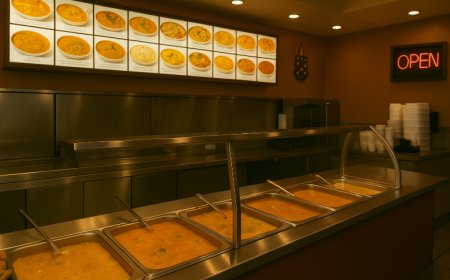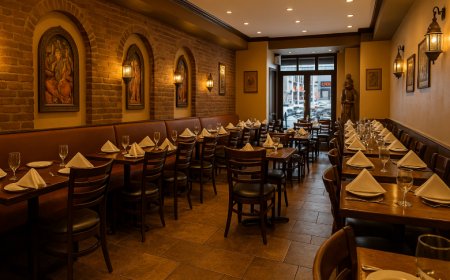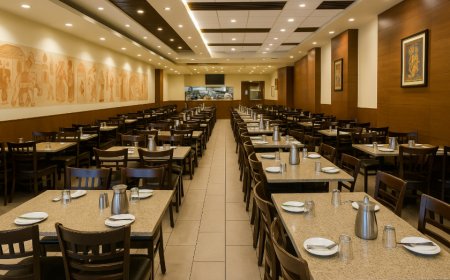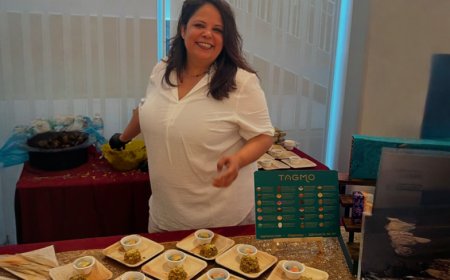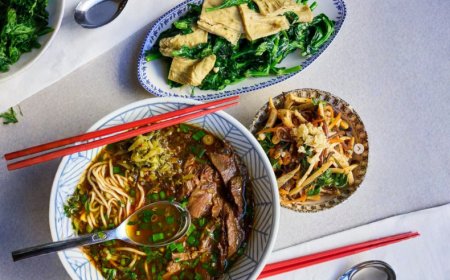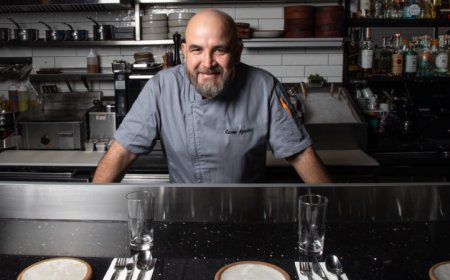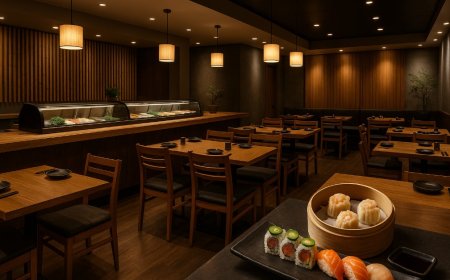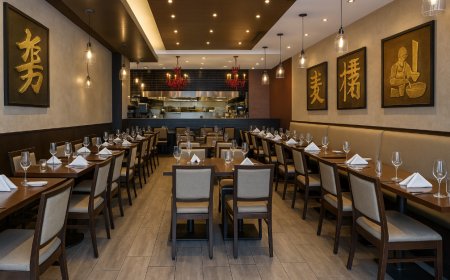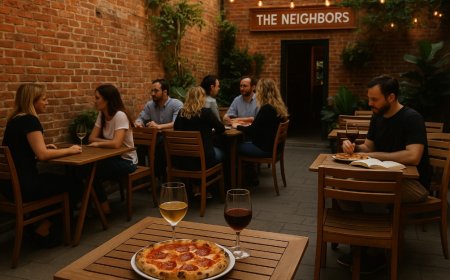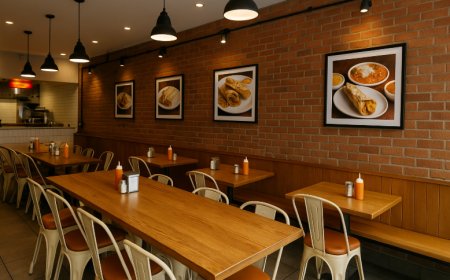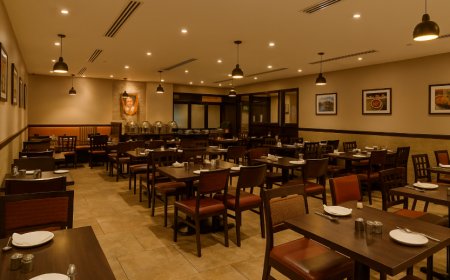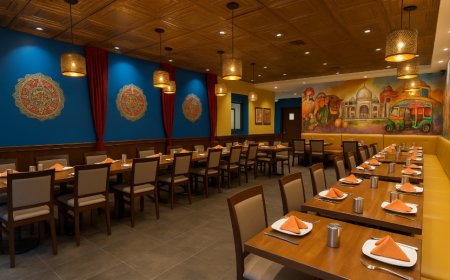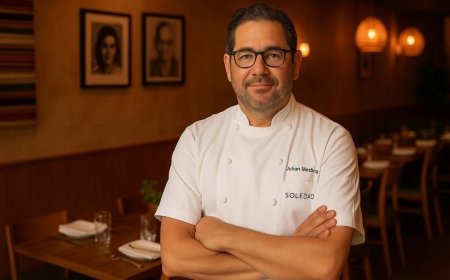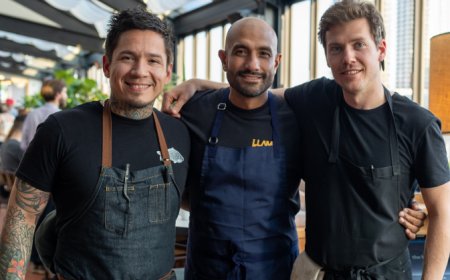Passerine Takes Flight in NYC: A New Chapter in Indian Fine Dining
Passerine opens in the former Sona space with a focus on progressive Indian cuisine, blending regional authenticity and modern culinary techniques for a refined, unforgettable experience.
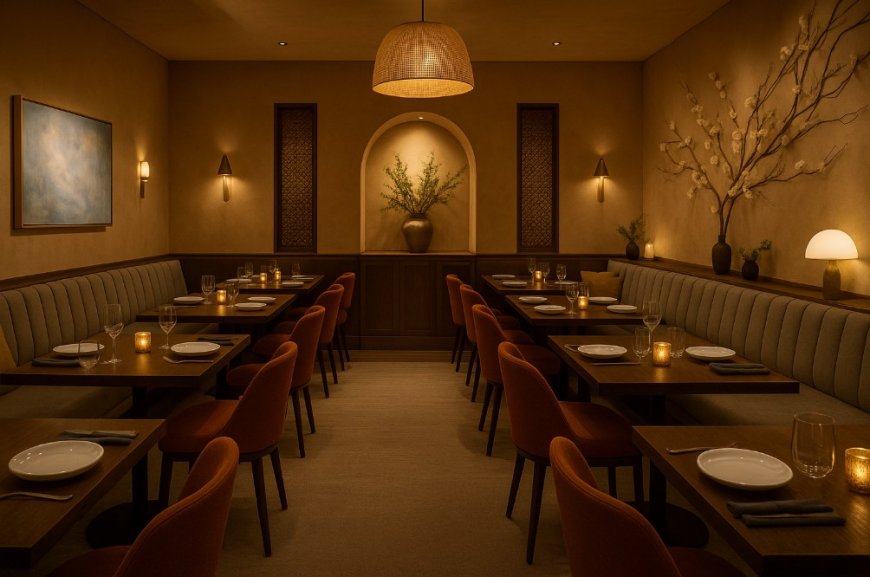
A New Era of Indian Fine Dining Arrives in New York
When a new Indian restaurant opens in New York City, it enters a vibrant, competitive scene filled with both heritage-driven classics and ambitious newcomers. Yet, Passerine, located in the former home of Sona in Manhattan, is already attracting attention—not just for where it stands, but for what it stands for.
Officially opening its doors on November 1, coinciding with the celebration of Diwali, Passerine is poised to become a significant player in the city’s culinary landscape. With a bold vision to elevate lesser-known Indian dishes through contemporary techniques and fine-dining sensibility, the restaurant marks a meaningful evolution for Indian cuisine in NYC.
Helmed by a critically acclaimed chef and a team of industry veterans, Passerine brings with it the promise of something both refined and revelatory. It’s not simply a replacement for what came before—it’s an entirely new flight path.
The Story Behind the Concept: Cultural Reverence, Culinary Ambition
Passerine’s inception was driven by a shared mission among its founding team: to celebrate India’s regional culinary diversity in ways that New York’s fine-dining scene has only begun to explore.
Named after a class of small, melodic birds—often symbols of migration and freedom—the restaurant embraces the idea of culinary storytelling through travel, memory, and reinvention. The space it now occupies was once home to Sona, a well-regarded Indian restaurant, and the transition has been handled with respect and intention. While the bones of luxury remain, the design now reflects a sleek, earthy elegance, punctuated by warm lighting and subtle nods to the Indian subcontinent through custom ceramics, textiles, and architectural details.
The team’s goal from the start was not just to redefine Indian fine dining, but to reshape how global audiences perceive Indian ingredients, textures, and flavor combinations. That mission is evident in every corner of Passerine’s identity—from its seasonal menu to its beverage program and even the structure of its dining experience.
A Chef’s Culinary Philosophy: Honoring Roots While Pushing Boundaries
At the core of Passerine is its executive chef, whose pedigree includes time spent in Michelin-starred kitchens and internationally recognized restaurants. While their training is rooted in classical European techniques, the soul of their cooking belongs unmistakably to India.
Rather than relying on the usual suspects—tikka masalas, butter chicken, or paneer staples—the menu at Passerine draws from lesser-known regional traditions, including Kashmiri, Goan, Bengali, and northeastern tribal cuisines. These inspirations are transformed through a progressive lens, using tools like fermentation, sous-vide, dehydrating, and slow infusion to elevate the essence of each dish.
What distinguishes Passerine’s kitchen is the precision of technique married with emotional storytelling. Each dish begins with a deeply personal memory or historical context, then evolves into something that is texturally complex, visually stunning, and surprising in flavor. Yet, despite its modernist appearance, the menu remains deeply respectful of tradition.
The chef often speaks of balance—not just in seasoning, but in culinary representation. For every dish inspired by a coastal curry, there’s one built around ancient grain preparations from the interior or mountain food from the Himalayan belt.
What Makes the Menu Special: Regional Rarities and Artistic Expression
The menu at Passerine is multi-course and seasonal, offering both à la carte options and a curated tasting menu. With each dish, guests are introduced to ingredients rarely seen in upscale Indian restaurants, and certainly not in such innovative forms.
Notable Dishes Might Include:
-
Smoked Pumpkin Theeyal – A South Indian-inspired dish that combines charred pumpkin with coconut and tamarind, finished with a mustard seed oil drizzle.
-
Koshi Macher Paturi – River fish wrapped in banana leaf, marinated in mustard paste and slow-cooked over embers, served with pickled radish and puffed rice textures.
-
Goan Black Garlic Xacuti – A take on the coastal spice-laden stew, layered with aged garlic, wild mushrooms, and a coconut espuma.
-
Millet Haleem with Bone Marrow – An innovative rendition of a traditionally meat-heavy porridge, made with ancient grains and enhanced with saffron and clarified ghee.
-
Bhut Jolokia Ice Cream – A daring dessert using the infamous ghost chili, balanced with jaggery to deliver heat, sweetness, and complexity.
The vegetarian options are equally compelling, reflecting the depth of India’s plant-based heritage, while the desserts veer refreshingly away from clichéd sweets, embracing savory pairings and tropical flavors.
Beverage Program: Spices in the Glass
The bar program at Passerine is no afterthought. With an emphasis on craft cocktails, natural wines, and regional spirits, the beverage list complements the food with both depth and daring.
Signature cocktails are built with infused spirits, house-made syrups, and spice distillates, such as a coriander-infused gin martini or a cardamom-cashew fat-washed bourbon old fashioned.
For the more adventurous, there’s a tasting flight of Indian whiskies and a selection of homemade kombuchas and botanical sodas, which serve as elegant non-alcoholic pairings.
The wine list leans toward low-intervention and food-friendly bottles, curated to mirror the earthy, spicy, and acidic profiles of the food.
The Space: Understated Luxury with a Cultural Thread
Passerine’s design evokes a sense of grounded sophistication, where every detail serves a purpose. There’s no flashy gold or overdone Indian motifs—instead, the palette is earth-toned and modern, with handcrafted elements anchoring the space.
Custom tilework, reclaimed wood, and subtle textile installations—some sourced directly from Indian artisan cooperatives—create a serene yet texturally rich backdrop for the dining experience. Lighting is kept soft and focused, offering a gallery-like ambiance that lets the food shine.
Even the tableware is bespoke, designed in collaboration with ceramicists and artisans who understood the restaurant’s intention to honor Indian culture without cliché.
Why Passerine Matters: Cultural Representation in Fine Dining
Passerine is more than a restaurant—it’s a statement about what modern Indian dining can be. At a time when global palates are more curious than ever, the restaurant introduces Indian cuisine not as a monolith, but as a rich tapestry of hyperlocal traditions, sophisticated techniques, and layered storytelling.
Its presence in Manhattan also signals a broader shift. No longer relegated to mid-tier or “exotic” dining experiences, Indian food is now being presented with the same attention to detail, innovation, and respect typically reserved for French or Japanese cuisine.
By spotlighting overlooked regional dishes, sourcing premium ingredients, and marrying tradition with technique, Passerine sets a new benchmark—not just for Indian restaurants, but for fine dining as a whole.
Conclusion: A New Journey Begins at Passerine
With the official opening aligned with Diwali, a festival that symbolizes light, new beginnings, and prosperity, Passerine’s debut couldn’t be more symbolic. It represents not just a new restaurant, but a broader cultural and culinary awakening.
In a city that thrives on reinvention, Passerine offers something rare: a dining experience rooted in authenticity yet driven by progress, where every plate tells a story, every spice has meaning, and every guest is invited on a journey of discovery.
Whether you're a connoisseur of Indian cuisine or a curious newcomer, Passerine promises a dining experience unlike any other in New York—elevated, emotional, and elegantly unforgettable.
What's Your Reaction?
 Like
0
Like
0
 Dislike
0
Dislike
0
 Love
0
Love
0
 Funny
0
Funny
0
 Angry
0
Angry
0
 Sad
0
Sad
0
 Wow
0
Wow
0

